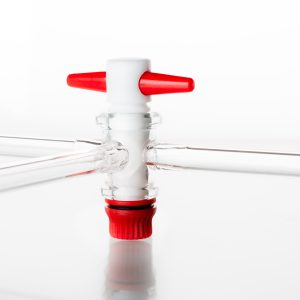Stopcocks are vital components for controlling the flow of liquids and gases across a wide range of laboratory operations. Whether you are assembling reaction systems, distillation units, or filtration setups, the right stopcock ensures accuracy, safety, and leak-free performance.
At MEDILAB, we supply high-quality PTFE, Rotaflow, and glass stopcocks engineered for global distributors, OEMs, research facilities, universities, and industrial labs.
Types of Stopcocks We Offer
- Made with a PTFE key for ultra-smooth movement
- Highly resistant to aggressive chemicals
- Provides an excellent airtight and leak-proof seal
- Ideal for corrosive media, vacuum applications, and general lab use
- Features a precision-engineered design for fine flow adjustment
- Commonly used in distillation, titration, and analytical setups
- Ensures consistent, controlled flow even under continuous use
3. Glass Stopcocks
- Manufactured from premium borosilicate glass
- Excellent thermal and chemical resistance
- Perfect for high-temperature reactions and sensitive analytical procedures
These stopcocks are widely used in:
- Distillation systems
- Filtration assemblies
- Gas flow control setups
- Reaction vessels and laboratory apparatus
- Chemical processing and research laboratories
- Educational and industrial research environments
Their precision and durability make them indispensable pieces in any laboratory glassware system.
To ensure optimal performance and longevity:
- Operate stopcocks gently—avoid forcing the key
- Lubricate glass stopcocks periodically with appropriate grease
- Rinse with compatible solvents after use to prevent deposits
- Check seals regularly in PTFE and Rotaflow units
- Avoid exposure to sudden thermal changes, especially for glass components
Proper handling ensures smooth operation and long-term reliability.
Precautions
- Do not overtighten the stopcock key to avoid damage
- Ensure compatibility with chemicals before use
- Maintain a clean sealing surface to avoid leakage
- Avoid using cracked or chipped glass stopcocks
- During heating, remove the stopcock if pressure buildup is expected
Following these precautions helps maintain safety and extends product life.
Why Global Distributors Prefer MEDILAB Stopcocks
- Consistent quality with international standards
- Precision-engineered for high performance
- Bulk-ready packaging for export
- Reliable supply for distributors, wholesalers, and OEM manufacturers
- Competitive pricing for international markets













